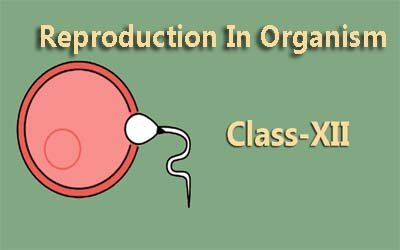Excretory Products And Their Elimination - Class 11
Your body is a busy city, constantly working and producing waste! But unlike throwing things away, your body has a special way to get rid of unwanted materials. In Class 11 Biology, you'll explore the fascinating world of Excretory Products and Their Elimination, learning how your body efficiently removes waste products to stay healthy. The Culprits: Metabolic Waste: As your body breaks down food for energy, it creates byproducts like ammonia, urea, and carbon dioxide. These need to be eliminated. The Disposal Options: Different organisms have evolved various ways to deal with waste. You'll learn about three main categories: Ammonotelic: Ammonia disposal (mostly aquatic animals) Ureotelic: Urea disposal (mammals like us) Uricotelic: Uric acid disposal (birds, reptiles) Your Body's Cleanup Crew: The Excretory System: This amazing system works tirelessly to filter and remove waste products from your blood. The key players include: Kidneys: Filter waste and excess water from blood, producing urine. Lungs: Eliminate carbon dioxide, a gas produced during cellular respiration. Skin: Sweats out excess water, salts, and some waste products. Why It Matters: By eliminating waste, your body maintains a healthy internal environment, preventing buildup of toxic substances and ensuring proper cell function. আপনার শরীর একটি ব্যস্ত শহর, ক্রমাগত কাজ করে এবং বর্জ্য উৎপাদন করে! কিন্তু জিনিসগুলি ফেলে দেওয়ার বিপরীতে, আপনার শরীরের অবাঞ্ছিত পদার্থগুলি থেকে মুক্তি পাওয়ার একটি বিশেষ উপায় রয়েছে। ক্লাস 11 বায়োলজিতে, আপনি বর্জ্য পণ্য এবং তাদের নির্মূলের আকর্ষণীয় জগৎটি অন্বেষণ করবেন, শিখবেন কিভাবে আপনার শরীর সুস্থ থাকার জন্য বর্জ্য পণ্যগুলি দক্ষতার সাথে সরিয়ে দেয়। দোষীদেরঃ বিপাকীয় বর্জ্যঃ আপনার শরীর যখন শক্তির জন্য খাবার ভেঙে দেয়, তখন এটি অ্যামোনিয়া, ইউরিয়া এবং কার্বন ডাই অক্সাইডের মতো উপজাত তৈরি করে। এগুলো দূর করতে হবে। নিষ্পত্তি বিকল্পগুলিঃ বিভিন্ন জীব বর্জ্য মোকাবেলার জন্য বিভিন্ন উপায় উদ্ভাবন করেছে। আপনি তিনটি প্রধান বিভাগ সম্পর্কে শিখবেনঃ অ্যামোনোটেলিকঃ অ্যামোনিয়া অপসারণ (mostly aquatic animals) ইউরিওটেলিকঃ ইউরিয়া অপসারণ (mammals like us) ইউরিকোটেলিকঃ ইউরিক অ্যাসিড নিষ্কাশন (birds, reptiles) আপনার দেহের পরিচ্ছন্নতার কর্মীদলঃ বর্জ্য ব্যবস্থাঃ এই বিস্ময়কর ব্যবস্থাটি আপনার রক্ত থেকে বর্জ্য পদার্থগুলি ফিল্টার এবং অপসারণ করতে অক্লান্ত পরিশ্রম করে। মূল খেলোয়াড়দের মধ্যে রয়েছেঃ কিডনিঃ রক্ত থেকে বর্জ্য এবং অতিরিক্ত জল ফিল্টার করে প্রস্রাব তৈরি করে। ফুসফুসঃ কার্বন ডাই অক্সাইড দূর করে, যা কোষীয় শ্বাস-প্রশ্বাসের সময় উৎপাদিত একটি গ্যাস। ত্বকঃ অতিরিক্ত জল, লবণ এবং কিছু বর্জ্য পদার্থ ঘাম ঝরিয়ে দেয়। কেন এটি গুরুত্বপূর্ণঃ বর্জ্য অপসারণের মাধ্যমে, আপনার শরীর একটি স্বাস্থ্যকর অভ্যন্তরীণ পরিবেশ বজায় রাখে, বিষাক্ত পদার্থের গঠন প্রতিরোধ করে এবং সঠিক কোষের কার্যকারিতা নিশ্চিত করে।
English
Last updated
Wed, 27-Nov-2024



















